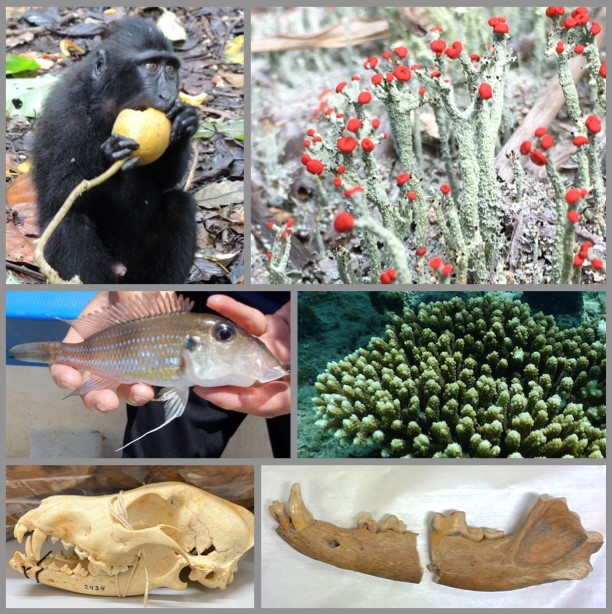Assoc. Professor Yohey Terai
The mechanism of adaptation and speciation

Yohey Terai
Assoc. Professor
| Research Area | The mechanism of adaptation and speciation |
|---|---|
| Lab Website | |
| Google Scholar | |
| ResearchMap | |
| Interview |

Today, many species inhabit the earth, and their interactions generate biodiversity. Biodiversity has been acquired through "speciation" (one species divides into two species) and through "adaptation" (organisms survive in their habitat). We focus on four primary research areas to elucidate the mechanisms of adaptation and speciation in organisms.
- Speciation: a genomic approach Based on genomic analysis, we are studying the speciation of seven species of macaques endemic to Sulawesi Island and corals.
- Adaptation by symbiosis We are studying the mechanism of adaptation to a new environment by symbiosis, using a volcano lichen that grows only in the areas where volcanic gases are venting.
- Adaptationto the Human environment The ancient genomes of the Japanese wolf and the ancient dog are used to study the origins of the dog and how dogs have adapted to their living environment with humans.
- Adaptation of vision to light environments We use fish and reptiles to study how organisms have adapted their vision to different light environments underwater.
Selected Publications, Books etc.
- 1.Gojobori J, Arakawa N, Xiayire X, Matsumoto Y, Matsumura S, Hongo H, Ishiguro N, Terai Y. (2021) The Japanese wolf is most closely related to modern dogs and its ancestral genome has been widely inherited by dogs throughout East Eurasia. doi: https://doi.org/10.1101/2021.10.10.463851
- 2.Kono M, Kon Y, Ohmura Y, Satta Y, Terai Y. (2020) In vitro resynthesis of lichenization reveals the genetic background of symbiosis-specific fungal-algal interaction in Usnea hakonensis. BMC Genomics 21:671.
- 3.Arakawa N, Utsumi D, Takahashi K, Matsumoto-Oda A, Nyachieo A, Chai D, Jillani N, Imai H, Satta Y, Terai Y. (2019) Expression changes of structural protein genes may be related to adaptive skin characteristics specific to humans. Genome Biology and Evolution 11:613–628.
- 4.Takahashi-Kariyazono S, Sakai K, Terai Y. (2018) Presence–absence polymorphisms of highly expressed FP sequences contribute to fluorescent polymorphisms in Acropora digitifera. Genome Biology and Evolution 10:1715–1729
- 5.Terai Y, et al. (2017) Visual adaptation in Lake Victoria cichlid fishes: depth-related variation of color and scotopic opsins in species from sand/mud bottoms. BMC Evolutionary Biology 17:200.
- 6.Malinsky M, Challis RJ, Tyers AM, Schiffels S, Terai Y, Ngatunga BP, Miska EA, Durbin R, Genner MJ, Turner GF. (2015) Genomic islands of speciation separate cichlid ecomorphs in an East African crater lake. Science 350:1493-1498
- 7.Seehausen O, Terai Y, Magalhaes IS, Carleton KL, Mrosso HDJ, Miyagi R, van der Sluijs I, Schneider MV, Maan ME, Tachida H, Imai H, Okada N. (2008) Speciation through sensory drive in cichlid fish. Nature 455:620-626.

